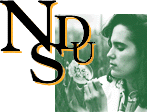 |
|
|
Acledra dimidiaticollis (Spinola, 1852)
|
|
|
|
Pentatoma dimidiaticollis Spinola, 1852: 133-134, pl. 1 fig. 3. Acledra dimidiaticollis: Stål, 1867: 528. Distribution: Chile. Type Information: STS (%, &), northern Chile, MRSN. |
Translation of Spinola's 1852 original description
Dimensions. Length 4 lines [8.6 mm]. Width 3 lines [6.4 mm]. Forms. Similar to that of albocostatum. Antennae proportionately shorter and not able to reach the posterior margin of the prothorax; second, third and fourth segments thin and, a little more or less, equal among themselves; the fifth longer and thicker than each of the preceeding three. Prothorax near hexagonal than oval. Anterior-external margins as rounded as in albocostata. Lateral angles equally blunt. Posterior-external margins straight as in apicicorne. Posterior angles better expressed and less open. Posterior border straight. Dorsum unequal, distinctly punctate, divided, a little toward the front of the middle, by a transverse, somewhat sinuous and more strongly punctate furrow. Anterior part imperceptibly inclined toward the front; two smooth lustrous spaces beside the anterior border. Color. Antennae, legs, head and anterior half of the prothorax, pale. Underside of the body of the same tint, sometimes washed with red. Posterior half of prothorax, leathery part of the elytra, scutellum, brown. Punctures deep, black. Posterior extremity of the scutellum, two linear oblique spots in its anterior angles, two other punctiform spots on the disk of the elytra, white and lustrous.
Sexes. Abdomen of the female as in apicicorne of the same sex, vulvular scales (exterior) more rounded. Last ventral plate of male as in the same sex of albocostatum, posterior angles of the sixth plate shorter and more obtuse. Found in the north.
| Researchers | Genus Index | Systematics | Host Information |
| Bibliography | Species Index | Biographies & Type Info | Natural Enemies |
| Catalogs | Identifications | Collection Lists | Other resources |
|
|
David A. Rider
Professor of Entomology
North Dakota State University
202 Hultz Hall
Fargo, ND 58105
E-Mail:
David.Rider@ndsu.edu
updated: 01 May 2007
Published by the
Department of
Entomology
Prospective students may schedule a visit by calling 1-800-488-NDSU.